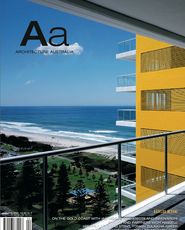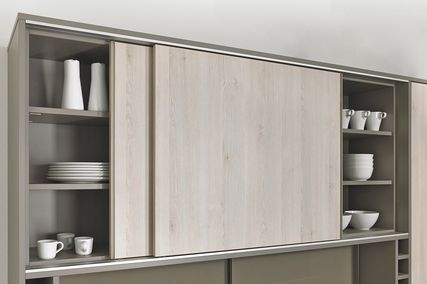WHY ARCHITECTURE MATTERS

Within this journal of record on Australian architecture there is a story in the background, one which lies hidden behind the images of the work published, or between the lines of text written about that work. These texts are often self-referencing; located within the discipline, they are generally concerned with a comparative assessment of the architecture presented. Between the lines and behind the images is the larger story about the value of architecture to our culture. This is a story that needs to emerge into the foreground of architectural discussion.
To use a current phrase (and with apologies to Don Watson’s excellent guide to modern language, Weasel Words) we need to develop a “value proposition” for architecture – a proposition about the value of design to the community, one which points to a larger life outside of the profession, to the big picture. I hold the view, which no doubt many will disagree with, that the future of our profession will be largely tied to developing this proposition. If the proposition has its own strength and resilience, then a formidable design culture can be built, not just formidable buildings. For architecture the “value of design” is replacing the “value of professional services” as the template for successful practice – a change that is inevitable with the rise of the so-called knowledge economy.
Although these few hundred words cannot encapsulate all of the strands of such a proposition, some can be simply stated. Firstly, the easy angles – real economic values. For example, Australian architects exporting their design services overseas contribute significantly to our national economy. Figures from the Australian Bureau of Statistics put this figure at over $25 million for 2005/2006, although independent assessments more than double it. This is a design-led value contribution to the so-called “China dividend”, our era’s equivalent to the sheep’s back.
Similarly, architects have been at the forefront of a sustained, design-led property boom. The weekend newspaper property supplements are incontrovertible evidence that design sells. Setting aside the lifestyle pantomime accompanying this boom, the work of architects has brought forward major new models for living, for working and for entertainment. In doing so design has significantly reshaped our cities for the new century.
The flip side to this success is a responsibility for a design-led revolution in built environment sustainability. This revolution is happening on multiple fronts – in government policy, regulatory frameworks and through industry tools – but the fulcrum for real change is in completed and committed designs. Whereas design and sustainability have previously had only slight connections, in the future intelligent and ethical design and sustainability will be inseparable.
The question of cultural value is the more complex end of the argument, especially in an era where these values fall into the “elite” side of the current political paradigm. More than ever, these arguments are hidden from public view, and architects, speaking on the public record, need to bring it back into view. (How many public advocate architects have we had since Robin Boyd?)
If we don’t, others will. Other disciplines looking into architecture seem to have little trouble developing the proposition. Although it argues the case in a rather bleak way, I can recommend a new book called The Destruction of Memory: Architecture at War. Written by Rob Bevan, it traces the tactics of bombing architecture in military campaigns (think Dresden). The heart of its argument is disarming, and disarmingly simple: that the tactic exists because architecture holds within it the values and aspirations of a community.
On a more positive note, the new book by Alain de Botton, The Architecture of Happiness, which has been extensively reviewed in the national dailies, is a philosopher’s rumination on the value of architecture. I’m sure there will be many differing views on the weight of the arguments in the book; however, you have to be impressed by any new book on the commercial bookshelves which has a first chapter entitled, plainly and without conceit, “The Significance of Architecture”. Why aren’t architects writing plain words on this subject?
To this end, Architecture Australia’s editor Justine Clark and I will be inviting architects to contribute short essays to this journal over coming issues, each to be published under the heading “Why Architecture Matters”. I hope each will make one small argument for the value of design, and that collectively they become a basis for the RAIA, and for all Australian architects, to take on a more effective public advocacy role – to state the case for why architecture matters.
I’d also be interested in any other views that may add for or against the design value proposition, so please email me at president@raia.com.au.
CAREY LYON ›› NATIONAL PRESIDENT RAIA















